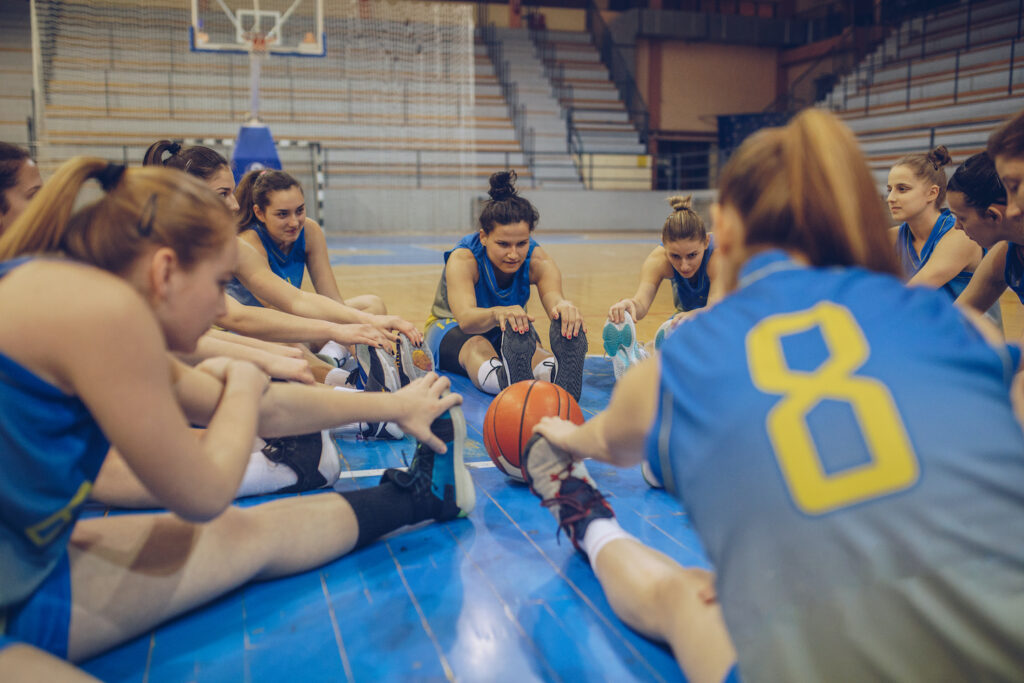What Is the Role of Rest and Recovery in a Strength and Conditioning Program?

Rest and recovery are essential components of a strength and conditioning program for young athletes. They play a crucial role in helping players achieve optimal performance and avoid injury. Strength and conditioning training can also prevent athletic burnout by promoting a healthy balance between training and recovery. By taking this approach to training, athletes can stay healthy, avoid injury, and perform to their best abilities. Learn more about the role of rest and recovery with The Moffitt Method.
What Do We Mean By “Rest and Recovery?”
Rest allows the body to heal from the physical demands of training and competition. During rest, the body repairs damaged tissues. It also replenishes energy stores and adapts to the stress placed on it during exercise. Without adequate rest, the body may become tired and more susceptible to injury.
Recovery refers to an athlete’s actions to help the body heal from exercise. Stretching, massage, foam rolling, and nutrition are all fantastic methods for healing. Recovery activities help reduce muscle soreness, improve flexibility, and promote tissue repair.
A strength and conditioning program should build these practices into the training schedule. For example, the schedule should include rest days for athletes to take a break from intense exercise. Or, on active recovery days, athletes can engage in low-intensity activities like stretching or yoga. Coaches and trainers can also encourage young athletes to prioritize sleep and nutrition, supporting the body’s recovery processes.
Signs of Overtraining
Athletic overtraining—or overtraining syndrome—occurs when an athlete engages in excessive training without giving the body time to recover. An estimated 30-40% of high-level athletes experience this burnout. Overtraining can lead to various physical and psychological symptoms that negatively impact an athlete’s performance and overall health.
Some signs of athletic overtraining include:
- Decreased performance. Despite training harder and longer, an overtrained athlete may experience declined performance. This can be due to fatigue, reduced strength and endurance, or a lack of motivation.
- Persistent fatigue. Overtrained athletes may experience ongoing fatigue, even after adequate rest and sleep. Insomnia and trouble sleeping are also possible symptoms.
- Mood changes. Athletes may experience irritability, mood swings, and feelings of depression.
- Increased risk of injury. Overtraining can lead to increased muscle soreness, joint pain, and a higher risk of injury.
- Weakened immune system. A lack of rest can weaken the immune system, making the athlete more susceptible to illness and infection.
- Decreased appetite. Athletes may experience reduced appetite, leading to weight loss and decreased energy levels.
Rest and recovery are essential for preventing and treating athletic overtraining. Coaches and trainers can also help prevent overtraining by monitoring athletes’ training loads and ensuring they get adequate recovery time. If a player is experiencing any of these symptoms, encourage them to take a break and potentially seek medical attention.
Protecting Young Athletes With Strength & Conditioning Training
An effective strength and conditioning training program involves a balanced approach to training. Exercises gradually increase in intensity and volume while allowing for rest and recovery. With individualized training through The Moffitt Method, we help your team build physical resilience. First, you partner with one of our pro-level coaches. Then, we select exercises for your particular sport to strengthen muscles and improve flexibility and mobility. This can help reduce the risk of injury and improve overall performance.
Our training also helps athletes develop mental toughness by pushing them outside their comfort zones to understand their physical limits. However, we take rest and recovery seriously. By promoting healing through rest days, active recovery, and nutrition, you can help your players avoid burnout to stay healthy and strong.
As your personal coach, we play a role in preventing athletic burnout by encouraging athletes to prioritize rest and recovery. We help you set realistic training goals, monitor training loads, and encourage athletes to take breaks when needed. In our strength and training app, record metrics to assess progress and understand when recovery time may be necessary.
Get The Moffitt Method Today
Rest and recovery are cornerstones of athletic success. And as such, coaches must prioritize training their team with safety in mind. With The Moffitt Method, we build a custom strength and conditioning program to fit your team’s needs while preventing overtraining. Call us at 337-279-3561 or message us to develop a training program for a safe and successful season.
There’s no need to risk injury or burnout when you can partner with a professional coach. Instead, get a personalized training program to drive exceptional results come game time. And with guidance from the strength coaching experts at The Moffitt Method, you can safely and efficiently showcase your players’ hard work.